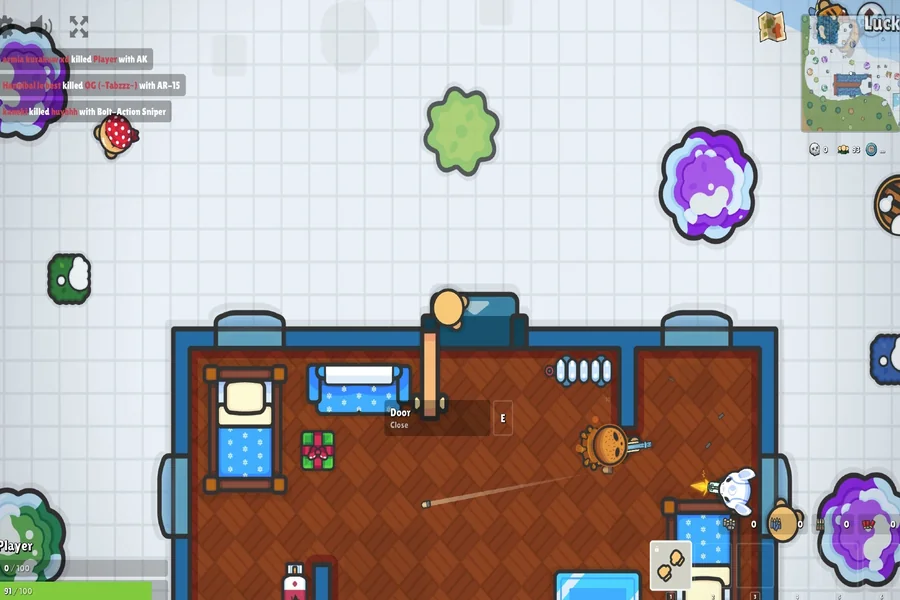Multiplayer browser games are no longer a dystopian dream—they’re the reality of today. With the power of modern web technologies, developers can now build real-time, interactive multiplayer experiences that load well in any browser. From casual cooperative play to competitive battlefields, multiplayer functionality can increase engagement and player retention exponentially.
Here’s how to develop multiplayer web games and the tools, architecture, and best practices that will assist you in getting it correct.
1. Learning Multiplayer Game Types There are a number of forms of multiplayer games:
- Turn-Based Games (such as chess, cards Daman Game): Lower latency requirements.
- Real-Time Competitive Games (such as shooters, battle arenas): Need fast communication in between players.
- Co-Op Multiplayer: Groups collaborating towards mutual objectives, such as in puzzle or strategy games.
- Massively Multiplayer Online Games (MMOs): Support large-scale player interactions within persistent worlds.
2. Real-Time Web Multiplayer Key Technologies
- WebSockets: The workhorse of real-time communication. In contrast to HTTP, WebSockets maintain an open, persistent connection between client and server, and allow bi-directional messaging.
- WebRTC: Peer-to-peer communication for low-latency voice/video and data transfer.
- Socket.IO: A JavaScript library that streamlines using WebSockets across browsers.
- Node.js: Perfect for constructing the backend of multiplayer games given its event-driven architecture.
3. Server Architecture Decisions
- \tPeer-to-Peer: Ideal for minimal 1v1 games; difficult to scale and prevent cheating.
- \tClient-Server: More secure and scalable. Server serves as an authority.
- \tAuthoritative Server Model: Server handles game logic, minimizing cheating and syncing.
4. Syncing Game State Maintaining player experiences in sync is critical.
- \tSnapshots: Send complete state of the game in intervals.
- \tDelta Updates: Send only the difference in the game state to conserve bandwidth.
- Interpolation: Smooths out player movement based on recent positions.
- Prediction: Clients predict immediate actions (like movement) for smoother gameplay.
5. Handling Latency and Lag Multiplayer games must address the delay in communication:
- Show visual indicators (like ping bars).
- Add “lag compensation” (e.g., shooting where the opponent was based on their last known position).
- Use local prediction and server reconciliation.
6. Managing Player Connections You’ll need to manage logins, lobbies, rooms, and reconnections:
- Implement authentication (OAuth or token-based).
- Implement matchmaking systems for skill-based pairings.
- Implement reconnection flows for temporary network interruptions.
7. Hosting and Scaling
- Utilize cloud platforms (e.g., AWS, Google Cloud, Heroku) for worldwide accessibility.
- For low-latency, use regional servers or edge computing.
- Use a dedicated game server framework such as Colyseus or Nakama.
8. Security and Fair Play Cheating is a valid issue in multiplayer games:
- Authenticate all critical actions on the server-side.
- Obfuscate or encrypt network messages.
- Track aberrant activity patterns (i.e., speed hacking, auto-clickers).
9. Tools and Frameworks Worth Exploring
- Colyseus: Lightweight Node.js game server for multiplayer games.
- Nakama: Open-source game backend that scales.
- PlayCanvas + Socket.IO: Pair for real-time 3D multiplayer gaming.
- Photon (via JavaScript SDK): Ideal for fast multiplayer game development.
10. Testing Multiplayer Games
You will need to test your multiplayer game on devices, browsers, and different network speeds.
- Mimic high-latency conditions.
- Test disconnect/reconnect scenarios.
- Utilize automated bots for load testing. ENECCCCUHCLEVIGJNJCFVCLBBKNVJKTGGIDHFDCCNJCU
Conclusion It is no longer the domain of AAA studios to create real-time multiplayer browser games. With open-source heavy-hitters, speedy internet, and web-native technology, even the smallest developers can turn ambitious multiplayer ideas into reality. Keep your eyes on state syncing, performance optimization, and ensuring fair play, and your game may be the next big hit that everybody plays straight from their browsers.



